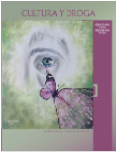Authors
Abstract
Objective. This article is the product of research called: The consumption of psychoactive substances in students of the Institución Educativa Neira of the Department of Caldas, a case study in the framework of inclusive education. Methodology. The narrative biographical’s approach was used in the research as a tool in the search for the construction of meanings, interactions and interrelations among different factors and actors. In the analysis of the collected information it was passed from simple understanding to a deeper understanding of the investigated phenomenon, this understanding was mediated by a guide axis that was the possibility of reconstructing the classroom practices in the Educational Institution. Results and conclusions. The research allowed to reveal the different horizons of sense of the young students about the consumption of psychoactive substances, moreover, to reveal the main factors that have determined the ages of beginning and the type of consumed substances.
References
Bolívar Botía, A. (2002). “¿De nobis ipsis silemus?”: Epistemología de la investigación biográfico-narrativa en educación. Revista Electrónica de Investigación Educativa, 4 (1), p.26.
Bolívar, A., Domingo, J. y Fernández, M. (2001). La Investigación Biográfica- Narrativa en educación, Enfoque y Metodología. Madrid España: La Muralla.
Corrêa de Carvalho, J. (2007). Noticias Juridicas. Recuperado de http://noticias.juridicas.com/conocimiento/articulos-doctrinales/4340-historia-de-las-drogas-y-de-la-guerra.
Corte Constitucional de Colombia. (1992). Sentencia T 519 de 1992. Santa Fé de Bogotá, Colombia.
Echeita Sarrionandia, G. y Ainscow, M. (2011). La educación inclusiva como derecho. Marco de referencia y pautas de acción para el desarrollo de una revolución pendiente. Revista Didáctica de la Lengua y la Literatura, 12 (2011), p. 13.
Escohotado, A. (1996). Historia elemental de las drogas. Barcelona, España: Anagrama.
Fierro, A. (1985). Marginación e integración educativa. Papeles del psicólogo, 10. Recuperado de http://www.papelesdelpsicologo.es/resumen?pii=239.
Ganzenmüller, C., Frijola, J. y Escudero, J. (1997). Drogas, sustancias psicotrópicas y estupefacientes: delitos contra la salud pública (II). Barcelona, España: Bosch.
Hernández-Sampieri, R. (2014). Metodología de la investigación, 6ta Ed. México: McGraw Hill.
Luria, A.R. (1984). Conciencia y Lenguaje. Madrid, España: Aprendizaje Visor.
McMillan, J.H., y Schumacher, S. (2005). Investigación educativa. Madrid, España: Pearson.
MEN (Productor) y MEN (Director). (2016). Clip de video: Diferencias entre Inclusión Educativa y Educación Inclusiva [Motion Picture]. Recuperado de https://www.google.com.co/search?q=diferencia+entre+educaci%C3%B3n+inclusiva+e+inclusi%C3%B3n+educativa&oq=diferencia+entre&aqs=chrome.0.69i59l2j69i57j69i59j0l2.8125j0j7&sourceid=chrome&ie=UTF-8.
UNESCO. (2005). Guidelines for inclusión: Ensuring Access to Education for All. Paris, France: UNESCO.
UNICEF. (2008). Estado Mundial de la Infancia 2008-2009. Salud materna y neonatal. Nueva York. Recuperado de www.unicef.org/spanish/sowc09/statistics/statistics.php.
Vygotsky, L.S. (1977). Pensamiento y lenguaje. Buenos Aires, Argentina: La pléyade.

 PDF (Español)
PDF (Español)
 FLIP
FLIP





















